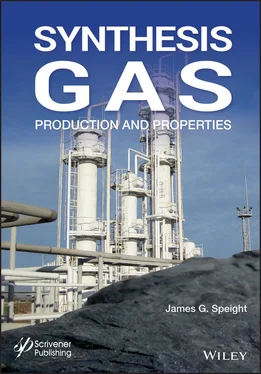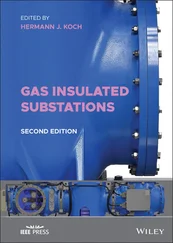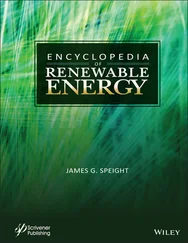While coal is an abundant natural resource, its combustion or gasification produces both toxic pollutants and greenhouse gases. By developing adsorbents to capture the pollutants (mercury, sulfur, arsenic, and other harmful gases), it is possible not only to reduce the quantity of emitted gases but also to maximize the thermal efficiency of the cleanup. Thus, gasification offers one of the most clean and versatile ways to convert the energy contained in coal into electricity, hydrogen, and other sources of power. Turning coal into synthesis gas isn’t a new concept; in fact the basic technology dates back to World War II.
As the last two to three decades have evolved, biomass has been considered as any renewable feedstock which is in principle carbon neutral (while the plant is growing, it uses the energy of the sun to absorb the same amount of carbon from the atmosphere as it releases into the atmosphere).
Biomass is a broad term used to describe any organic material or resource which is derived from plant or animal matter, and primarily used as fuel. This includes wood, food crops, grass and woody plants, agriculture and forestry residues, and organic components of municipal and industrial wastes. Biomass excludes organic material which has been transformed via geological processes to fossil fuels such as natural gas, crude oil, and coal. The chemical composition of biomass varies substantially, because of the broad range of materials involved, but the main components are moisture, carbohydrates or sugars, lignin, and mineral matter which becomes ash upon combustion or gasification.
There are two methods for converting biomass into high-value products: (i) biochemical conversion and (ii) thermochemical conversion. Biochemical conversion involves the use of biological processes to convert biomass into biofuels, chemicals and electrical power. In the case of ethanol production, enzymes and/or chemical processes are used to extract sugars from the biomass, which can then be converted to ethanol via fermentation. Thermochemical conversion, either gasification using less than stoichiometric oxygen or pyrolysis (the gasification of biomass in the absence of oxygen), uses heat and pressure to convert biomass to liquid fuels, chemicals and electrical power. Combustion is an option for conversion of biomass to electrical power; however, the synthesis gas produced by gasification is much easier and economical to clean than are the exhaust gases produced by combustion. This results in gasification providing better environmental performance, including a cheaper method of capturing carbon dioxide. In addition, synthesis gas produced by gasification can also be processed into a variety of marketable products, where combustion is limited to electrical production via the steam cycle.
The two main advantages that gasification has over biochemical conversion processes are (i) the speed with which the end product is produced (minutes for gasification compared to days for biochemical conversion) and (ii) the ability of the gasification process to extract the energy held in lignin, the harder structural part of the biomass. Fermentation methods currently are unable to extract the energy stored in the lignin; however, this does present the possibility of using gasification as a waste treatment method for materials that cannot be fermented at a biochemical conversion facility.
Through gasification, biomass is converted into a gas consisting of carbon monoxide, carbon dioxide, hydrogen, and other compounds by applying heat and pressure in the presence of steam and a small amount of oxygen, typical of gasification of any organic material. Biomass produces hydrocarbon compounds in the gas, especially in the absence of oxygen, requiring an extra step to remove them with a catalyst downstream of the gasifier. The water gas shift reaction is then used to convert some of the carbon monoxide with water to form more carbon dioxide and hydrogen:

Generally, biomass does not gasify as easily as coal but most of the main type of gasifiers can be designed to handle biomass or a combination of biomass and coal, but each has positives and negatives and the selection depends on the specific feedstock and the desired product or products.
Raw materials that can be used to produce biomass derived fuels are widely available; they come from a large number of different sources and in numerous forms (Rajvanshi, 1986). The main basic sources of biomass include: (i) wood, including bark, logs, sawdust, wood chips, wood pellets and briquettes, (ii) high-yield energy crops, such as wheat, grown specifically for energy applications, (iii) agricultural crops and residues (e.g., straw), and (iv) industrial waste, such as wood pulp or paper pulp. For processing, a simple form of biomass such as untreated and unfinished wood may be converted into a number of physical forms, including pellets and wood chips, for use in biomass boilers and stoves.
Biomass includes a wide range of materials that produce a variety of products which are dependent upon the feedstock (Balat, 2011; Demirbaş, 2011; Ramroop Singh, 2011; Speight, 2011a). In addition, the heat content of the different types of biomass widely varies and have to be taken into consideration when designing any conversion process (Jenkins and Ebeling, 1985). Thermal conversion processes use heat as the dominant mechanism to convert biomass into another chemical form. The basic alternatives of combustion, torrefaction, pyrolysis, and gasification are separated principally by the extent to which the chemical reactions involved are allowed to proceed (mainly controlled by the availability of oxygen and conversion temperature) (Speight, 2011a).
Energy created by burning biomass (fuel wood), also known as dendrothermal energy, is particularly suited for countries where fuel wood grow more rapidly, e.g., tropical countries. There is a number of other less common, more experimental or proprietary thermal processes that may offer benefits including hydrothermal upgrading (HTU) and hydroprocessing. Some have been developed to be compatible with high moisture content biomass (e.g., aqueous slurries) and allow them to be converted into more convenient forms. Some of the applications of thermal conversion are combined heat and power (CHP) and co-firing. In a typical dedicated biomass power plant, efficiencies range from 7 to 27%. In contrast, biomass co-firing with coal, typically occurs at efficiencies close to those of coal combustors (30 to 40%) (Baxter, 2005; Liu et al. , 2011).
Many forms of biomass contain a high percentage of moisture (along with carbohydrates and sugars) and mineral constituents – both of which can influence the economics and viability of a gasification process. The presence of high levels of moisture in biomass reduces the temperature inside the gasifier, which then reduces the efficiency of the gasifier. Many biomass gasification technologies therefore require dried biomass to reduce the moisture content prior to feeding into the gasifier. In addition, biomass can come in a range of sizes. In many biomass gasification systems, biomass must be processed to a uniform size or shape to be fed into the gasifier at a consistent rate as well as to maximize gasification efficiency.
Biomass such as wood pellets, yard and crop waste and “energy crops” including switch grass and waste from pulp and paper mills can also be employed to produce bioethanol and synthetic diesel. Biomass is first gasified to produce synthesis gas and then subsequently converted via catalytic processes to the aforementioned downstream products. Biomass can also be used to produce electricity – either blended with traditional feedstocks, such as coal, or as a single feedstock. Also, most biomass gasification systems use air instead of oxygen for gasification reactions (which is typically used in large-scale industrial and power gasification plants). Gasifiers that use oxygen require an air separation unit to provide the gaseous/liquid oxygen; this is usually not cost-effective at the smaller scales used in biomass gasification plants. Air-blown gasifiers utilize oxygen from air for gasification processes.
Читать дальше













